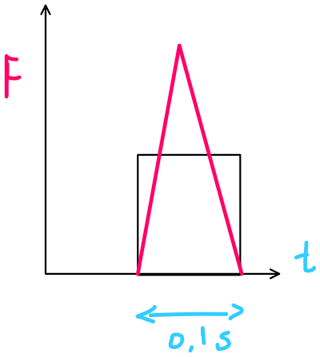Like alephzero already mentioned the pull up part is usually the less stresses part. The problem is with the deceleration forces when you are at the top of the pull up bar and suddenly you let your self down. Although that seldom happen (i.e. there is a constant force for deceleration), it is best to assume the worst case scenario.
I'll make the following assumptions:
- the fully extended arm is h = 1[m]
- the weight is 100 [kg] ~ 1000N
Assuming you are at the top and you let go, the velocity can be calculated by the following formula:
$$v= \sqrt{2 g h}\approx 4.47[m/s]$$
That velocity is the free fall velocity of your body (arms should be excluded because they will not be travelling with the same speed as the torso but that's a detail, so I'll just keep it simple).
Now assuming that the duration of deceleration is 0.1[s], from the relationship betwen impulse and momentum you obtain:
$$ m\cdot v + \int F\cdot dt = 0 \rightarrow$$
$$ \int F\cdot dt = -m\cdot v = 447 [Ns]$$
From that point it depends what sort of approximation you make for F.

If you assume that F is:
-constant then you can estimate that:
$$F_c= 4472 [N]$$
- if you assume it has a triangular profile, then
$$F_{tri}= 8944 [N]$$
There are other approximations (sinusoidal), but for the purposes of this don't make much sense. I would go for the triangular.
It is noteworthy that the deceleration force, is added to the force of weight, but you can see that is almost another order of magnitude (just like alephzero proposed).
I would take it a step further and suggest that you should add something extra (possibly double it although that is starting to be an overkill). However, its something you don't want it to bend nor break while you are at it.
things to note.
This is very dependent on the duration of the deceleration. So doubling $dt$ results in smaller forces.
However, given that the duration of free fall is about 0.45[s], I don't think you can go much higher that 0.1[s].
comparison with pull up weight
As you can see, the comparing the deceleration force, compared to the pull up force (which is quasi static), makes it easy to understand that the deceleration scenario is much more punishing to the beam.
